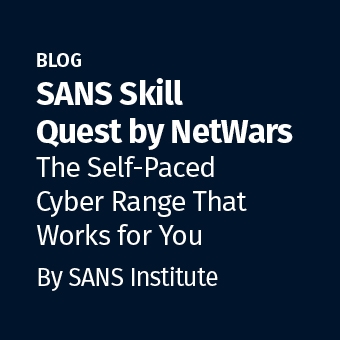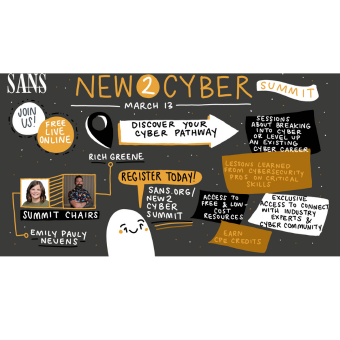Cloud security isn’t theoretical—it’s real, hands-on, and directly tied to an organization’s ability to protect its assets. When teams deploy workloads in Amazon Web Services (AWS), they need more than just a checklist or high-level understanding of security best practices. They need the skills to build security in from the start and avoid misconfigurations that could expose critical data.
That’s exactly why I developed SEC480™: AWS Secure Builder™—a course designed to teach engineers, developers, and architects how to securely build, deploy, and operate AWS environments with confidence.
The Reality of AWS Security Today
Organizations moving to AWS are often drawn in by its scalability, flexibility, and vast service offerings. But those same strengths introduce complexity. Misconfigurations remain one of the top security risks in the cloud, often stemming from a lack of specialized security knowledge among those responsible for building and maintaining cloud workloads.
AWS provides a secure foundation, but securing workloads is a shared responsibility.
Teams that don’t fully understand AWS Identity and Access Management (IAM), encryption options, or secure deployment pipelines can easily make mistakes that lead to costly breaches. Security isn’t just the responsibility of dedicated security professionals—it increasingly falls within the purview of engineers, developers, and architects.
That’s why this course goes beyond just explaining security concepts—we give students hands-on experience in securing AWS environments.
What Makes the SEC480 Course Different?
1. Practical, Hands-On Learning
Too many security courses rely on slide decks and abstract discussions. The SEC480 course is built differently. Every module is paired with real-world labs that allow students to apply what they learn immediately. We cover AWS-specific security controls, tools, and configurations—not just theory, but actual implementation.
2. Focus on AWS-Specific Security Challenges
The SEC480 course dives into AWS-native security best practices, including identification and authorization, least privilege access, security monitoring, and workload/service hardening. Engineers and developers walk away with a clear understanding of AWS’s shared responsibility model and how to implement security at every stage of the SDLC while leveraging AWS’s cloud-native tooling.
3. Training That Benefits the Whole Team
Security is not just an individual responsibility—it’s a team effort. One of the most effective ways to reduce cloud security risks is by ensuring that everyone involved in cloud deployments has a security-first mindset. This course is designed to be highly effective for teams of engineers, developers, and architects, ensuring that security is embedded throughout an organization’s cloud strategy.
Why I Wrote This Course
Over the years, I’ve worked with countless teams struggling with cloud security. Many didn’t have dedicated security roles, yet they were expected to make decisions with major security implications. Here’s what I saw happening time and time again:
Identity and access controls were too open. Without a clear understanding of IAM, teams would often grant broad permissions simply to get things working, leaving workloads exposed.
Misunderstanding the Shared Responsibility Model and service misconfigurations. Developers often didn’t realize their responsibilities regarding security in the cloud, leading to misconfigured services like S3 buckets or neglecting encryption and patching.
Security as an afterthought. CI/CD pipelines were optimized for speed, but security wasn’t part of the process, leading to hard-to-fix misconfigurations.
Insufficient logging and monitoring and reactive security. Lack of robust logging and monitoring resulted in poor visibility, hindering incident detection and response, and fostering a reactive rather than proactive security approach.
I built this course to address these gaps—not just by explaining security concepts, but by showing engineers and developers how to apply them in real-world AWS environments.
Why Security Training Matters for AWS Teams
For businesses operating in AWS, security training isn’t optional—it’s essential. When engineers and developers understand cloud security, organizations can:
✔ Reduce risk by avoiding costly misconfigurations and security gaps
✔ Improve compliance by aligning with security best practices with industry standards
✔ Strengthen incident response by enabling teams to detect and mitigate threats faster
✔ Enhance operational efficiency by embedding security into development workflows from the start
Building a Security-First Cloud Culture
Security isn’t something to bolt on later—it’s something to build in from the start. Organizations that invest in security education for their cloud teams are more resilient and better equipped to navigate the evolving threat landscape. If your team is working in AWS, now is the time to ensure they have the skills to secure it properly.
Ready to Build Secure AWS Environments with Confidence?
Don’t wait for a misconfiguration to become a security incident. Sign up for SEC480: AWS Secure Builder to equip your team with the hands-on skills they need to build, deploy, and operate secure cloud environments—starting from day one.
Want a sneak peek before committing? Request a course demo and see how SEC480 can help your team put security at the core of every AWS deployment.




